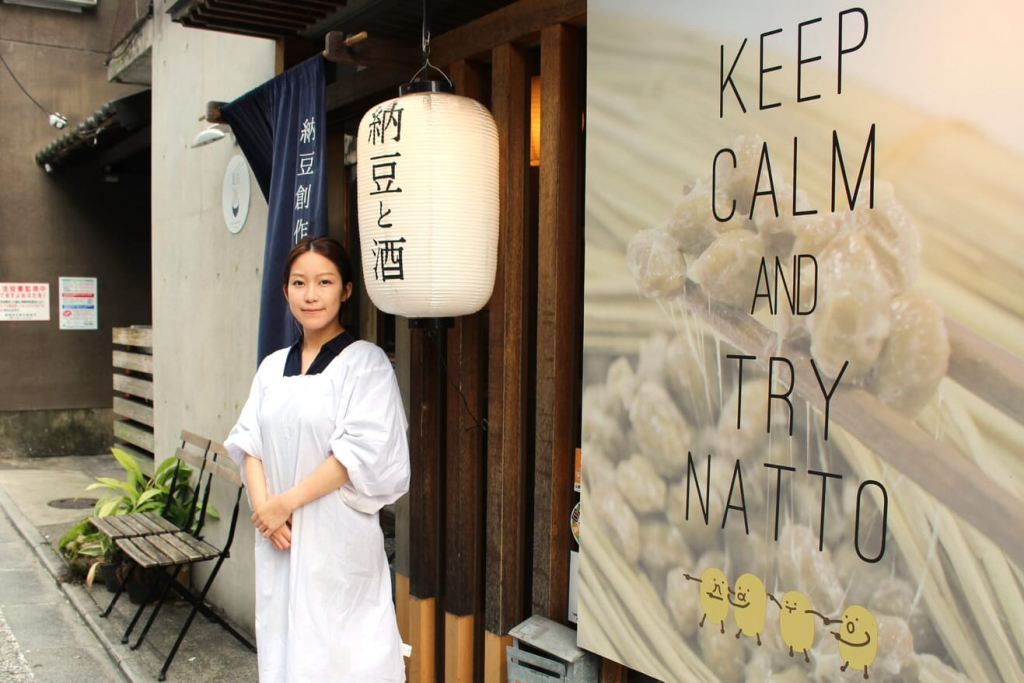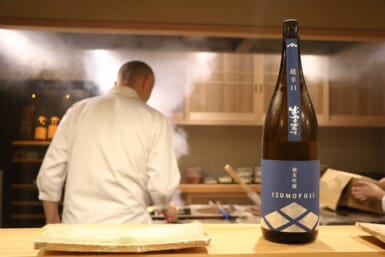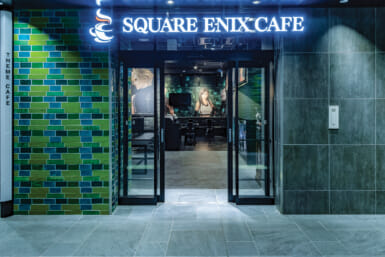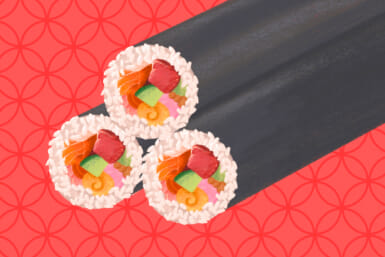“I want to eradicate the hate of natto beans,” says Naoko Natsumi, the owner of Natsumame, a restaurant in Kyoto’s Gion district. From appetizers to desserts, its ¥4,400 course meals are all made using natto beans. Following its opening in 2020, the creative dishes Natsumi invented have earned her a great reputation and Natsumame’s reservations quickly started filling up.
Creating More Palatable Natto Dishes
Of course, Natsumi welcomes natto fans, but she opened the restaurant especially for those who are distrustful of the gooey, sticky, pungent beans.
Natsumi studied in Kyoto and spent a period in the United States as an exchange student. She shared the natto sent from Japan with her roommates and friends in the US, only to see them rush to the bathroom right after tasting it. “I originally didn’t like natto too, so I could understand their feeling,” she admits.
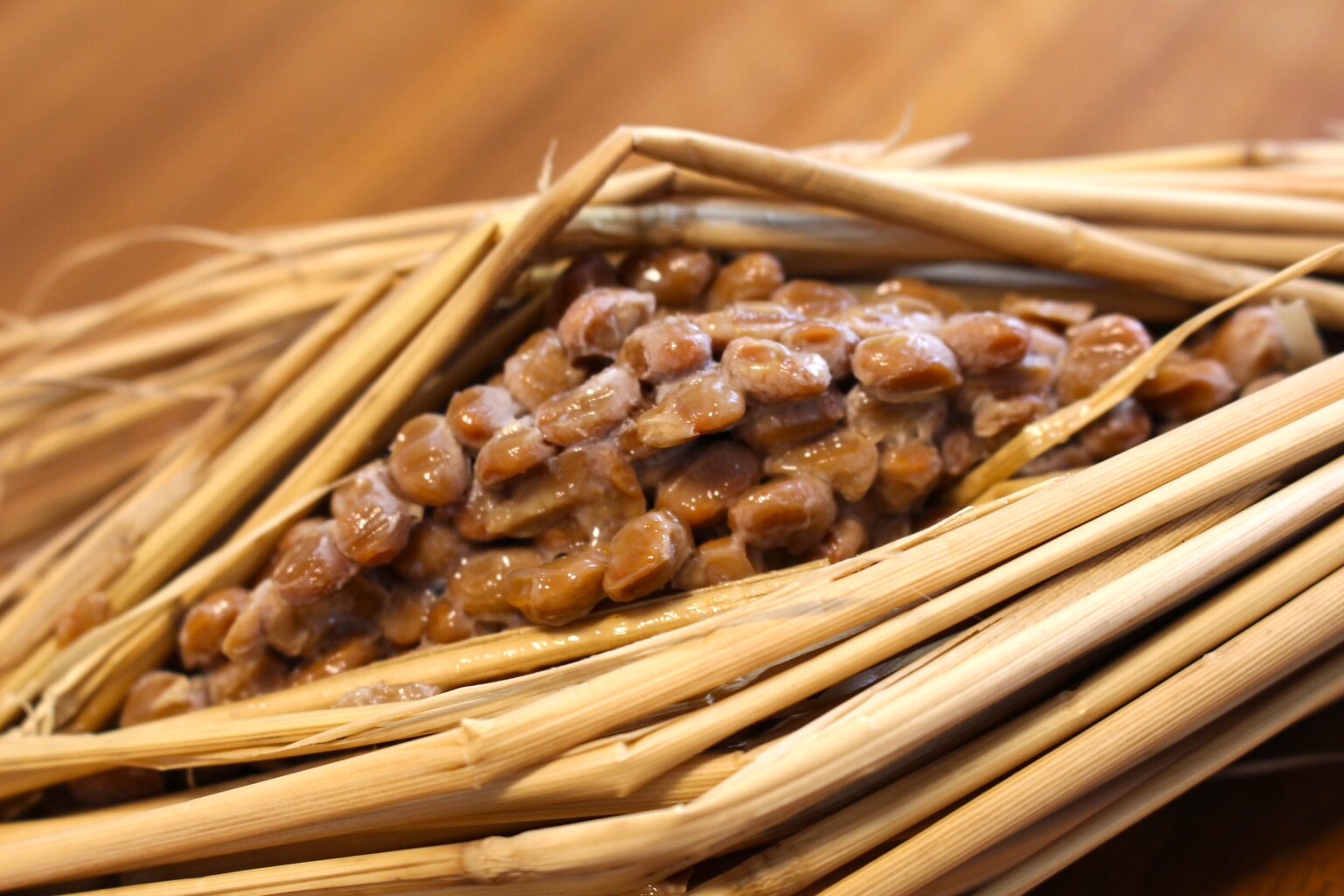
Traditionally, soybeans are fermented in a straw container to become natto.
She kept wondering, however, how to make natto more palatable for them. Perhaps mixing the fermented beans with something else?
Back in Japan, as a senior in college, Natsumi was determined to open a natto restaurant. She racked her brain for ideas on natto dishes and found that natto and minced meat was a great combination. The discovery led to the creation of one of Natsumame’s most popular main dishes: Natto-han (natto rice).
Natsumi says about 70 percent of people walking on the streets in Gion, which is known as a geisha district, were foreign visitors (before the Covid-19 pandemic). “I really wanted them to casually drop by at my restaurant while they were sightseeing and give natto a try, regardless of whether they like it or not,” she tells Tokyo Weekender.
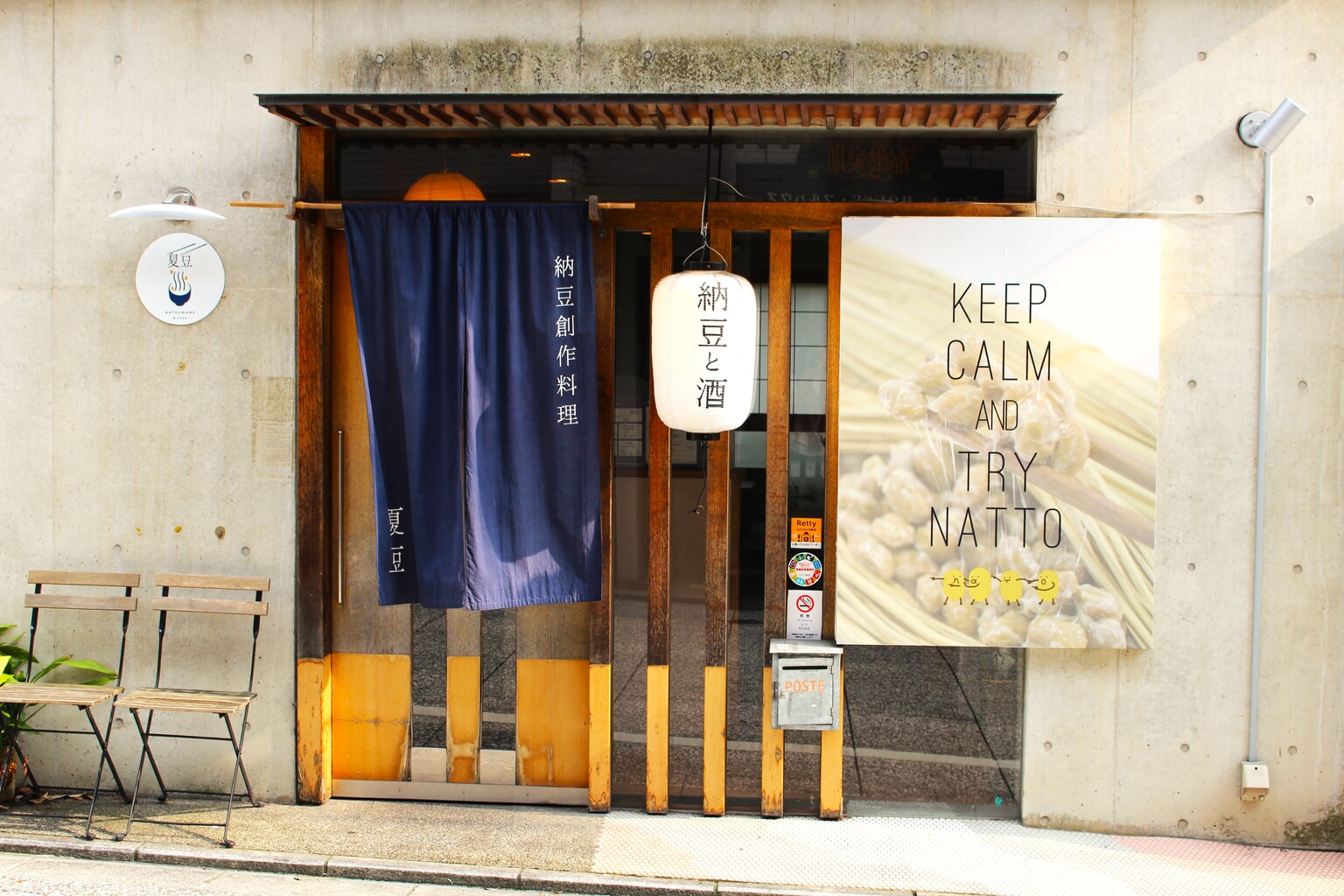
The lantern says ‘Natto and Sake.’ The English sign is inspired by Britain’s famous ‘Keep Calm and Carry On’ poster.
Helping That First Bite Taste the Best
People unfamiliar with natto often complain about the stringy look, the distinctive smell and the gooey texture. Natsumi has selected natto beans and created her original recipes to eliminate those obstacles. She says natto beans sold at your everyday supermarket are often made from imported soybeans and have a stronger smell. Natto lovers like those regardless, but they might be too much for those trying natto for the first time.
“The beans we use are completely different,” Natsumi explains. “Our beans are more puffed and some people are surprised.’”
Natsumame mainly uses two kinds of natto beans. The small beans type from Hokkaido and the large ones from Kyoto’s Keihoku district, one of natto’s supposed birthplaces.
The small beans are very soft and become like paste as they are mixed, so they can be harmoniously blended with other ingredients. Natsumame’s potato salad using these beans is just like smooth mashed potatoes, and natto’s distinctive texture and flavor are hardly felt.
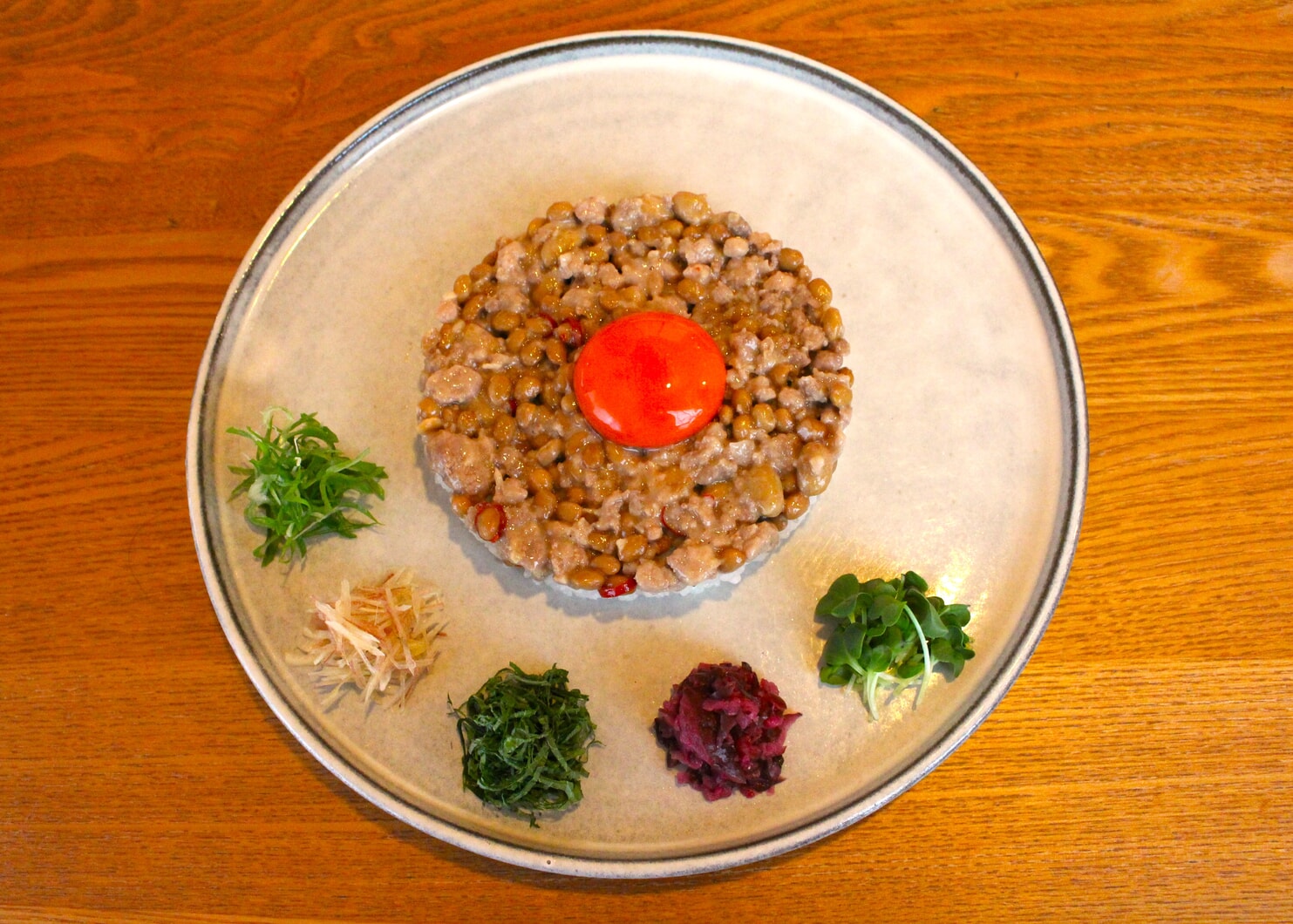
Natto-han is one of the most popular dishes at Natsumame, along with Neba-bonara.
The bigger ones are creamy and Natsumi recommends using them with fresh cream. She uses them in her version of carbonara, another popular item. The dish is called “Neba-bonara” from the Japanese word neba-neba meaning gooey or stringy. Surprisingly, cheese is not used in the dish, but the natto’s creaminess and stringiness perfectly play the role of the melty cheese.
If the sticky beans are still off-putting, Natsumi recommends her natto ice cream, which comes at the end of the course. The natto beans inside it are frozen so they have no smell and they resemble nuts. The natto ice cream is as stretchy as the Turkish ice cream, dondurma.
Finally, there is a special “training” method that Natsumi, as a past natto hater, recommends. Take it one bean at a time. When she was a child, her mother told her to eat natto because of its health benefits. She began by putting a single natto bean on top of her daughter’s rice. She placed two the next day and three on the third day. Natsumi was unhappy about it and buried the beans deep in the rice before swallowing. But about six months later, somehow the beans became tasty and she started asking for more.
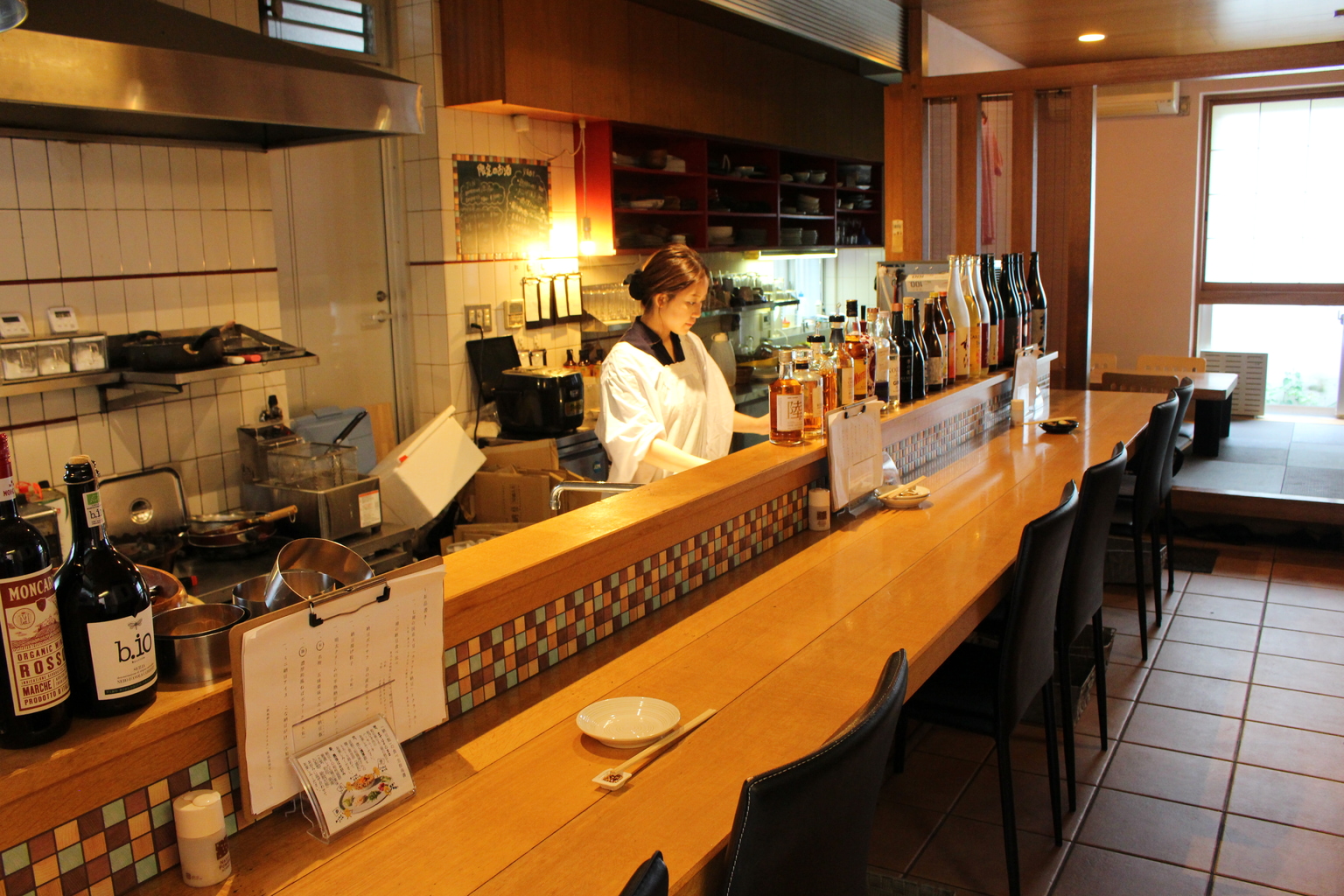
Natto is a Budget Superfood
Of course, you don’t have to eat natto, but Natsumi’s mother was right about the health benefits. As a natural probiotic food rich in protein and vitamins, it’s said to promote gut health, improve blood circulation, strengthen the immune system and help slow skin aging. Rumor has it that one pack of natto a day keeps death away and a 2020 study published in a British medical journal backs this up.
Despite the extremely high nutritional value, natto is incredibly cheap. A set of three packs is about ¥100 at grocery or convenience stores.
So, you really have nothing to lose if you just give it a try. In fact, you’ll make this Kyoto chef incredibly happy.

